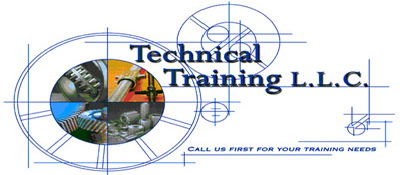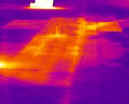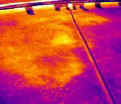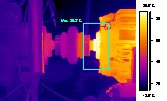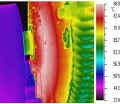Learning
Pyramid
Courses
Method of
Instruction
Instructors
Client List
Testimonials
Contact Us
|
|
|
Thermography Scanning |
Infrared Scanning also known as Thermography
Scanning, is the most powerful electrical maintenance tool available. Infrared is used to locate defects and potential failures in electrical equipment by scanning for abnormal hot spots and heating patterns. By finding electrical problems manifested by heat,
you are able to locate and repair defects before they cause unscheduled power losses, equipment damage, or even catastrophic equipment failures and possible personal injury. Infrared Scanning is an extremely effective method of locating problems in anything electrical that carries current. Here are examples of electrical equipment successfully scanned with Infrared:
Our Infrared (Thermography) Scanning service has many other applications, such as locating building roof leaks,
water leaks, detecting building heat loss, finding flaws in Induction Heating
equipment. Any deficiency that is manifested by heat can be Infrared Scanned. |
||||||||||||||||||||||||||||||||
|
|
